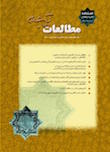A Curious Case of Taboo Rendition in Persian AVT
A Spectrum of Ideas
Abstract
The pace of technological evolution, with particular reference to mass media outlets like films, has become so fast in recent years. Such rapid progress made audiovisual translation (AVT) a hot topic. This study aims to investigate the impact of local cultural norms and translators’ hiring institutions policies on Persian audiovisual translators’ decisions in case of taboo translation. In this paper, three translations of the film named I, Daniel Blake were analyzed. The translation corpus included an Islamic Republic of Iran Broadcasting (IRIB) dubbed version, a subtitle used by an authorized private video on demand (VOD) company and finally a fansubbed version. The theoretical framework of the current study was based on Sharifi and Darchinian’s (2009) classification of taboo interpretation in contemporary Iran and Khoshsaligheh and Ameri’s (2014) model for taboo translation. The results depicted that taboo translation in Persian AVT represent an ideological spectrum going from one extreme to its opposite. This complete range of decisions in Persian AVT truly reflects a famous dichotomy in translation i.e. Domestication and Foreignization.
Keywords:
Taboo, Audiovisual Translation, Dubbing, Fansubbing, SubtitlingReferences
Ameri, S., & Khoshsaligheh, M. (2018). Exploring the attitudes and expectations of Iranian audiences in terms of professional dubbing into Persian. HERMES-Journal of Language and Communication in Business, (57), 175–193. doi:https://doi.org/10.7146/hjlcb.v0i57.106206
Arbab, S. (2012). بررسی و طبقه بندی دشواژه های رایج فارسی در تداول عام. [The study and the classification of Persian colloquial taboo words]. A Journal of Comparative Linguistic Researches, 2(4), 107–124.
Ávila-Cabrera, J. J. (2016). The subtitling of offensive and taboo language into Spanish of Inglourious Basterds. Babel, 62(2), 211–232. doi:https://doi.org/10.1075/babel.62.2.03avi
Baker, M., & Hochel, B. (2000). Dubbing. In M. Baker & K. Malmkjær (Eds.), Routledge encyclopedia of translation studies (pp. 74–76). London: Routledge.
Beseghi, M. (2016). WTF! Taboo language in TV series: An analysis of professional and amateur translation. Altre Modernità, 15, 215–231. doi:https://doi.org/10.13130/2035-7680/6859
Chaume, F. (2004). Synchronization in dubbing: A translational approach. In P. Orero (Ed.), Topics in Audiovisual Translation (pp. 35–52). Amsterdam: John Benjamins.
Chaume, F. (2013). The turn of audiovisual translation: New audiences and new technologies. Translation Spaces, 2(1), 105–123. doi: 10.1075/ts.2.06cha
Cintas, J. D., & Sánchez, P. M. (2006). Fansubs: Audiovisual translation in an amateur environment. The Journal of Specialised Translation, (6), 37–52.
Fromkin, V., Rodman, R., & Hyams, N. (2013). An introduction to language. Stamford, CT: Cengage Learning.
Gottlieb, H. (1992). Subtitling: A new university discipline. In C. Dollerup & A. Loddegaard (Eds.), Teaching translation and interpreting: Training, talent, and experience (pp. 161–169). Amsterdam: John Benjamins.
Gottlieb, H. (1997). Subtitles, translation & idioms. Center for Translation Studies and Lexicography, University of Copenhagen.
House, J. (2015). Translation quality assessment: Past and present. New York: Routledge.
I, Daniel Blake (2018a). Filimo Retrieved February 24, 2018, from https://www.filimo.com/m/7d1bH
I, Daniel Blake (2018b). Fajr International Film Festival (FIFF) Retrieved February 24, 2018, from http://fajriff.com/en/film/i-daniel-blake/
I, Daniel Blake (2016). (n.d.). SubtitlePedia. Retrieved May 15, 2018, from http://subtitlepedia.co/download/finish/17/14663
Ivarsson, J., & Carroll, M. (1998). Subtitling. Simrishamn: TransEdit.
Izwaini, S. (2014). Amateur translation in Arabic-speaking cyberspace. Perspectives, 22(1), 96–112. doi: 10.1080/0907676X.2012.721378
Khoshsaligheh, M., & Ameri, S. (2014). Translation of taboos in dubbed American crime movies into Persian. T&I Review, 4(2), 25–50.
Khoshsaligheh, M., & Ameri, S. (2016). Ideological considerations in official dubbing in Iran. Altre Modernità (15, Special Issue), 232–250. doi:https://doi.org/10.13130/2035-7680/6864
Khoshsaligheh, M., Ameri, S., & Mehdizadkhani, M. (2018). A socio-cultural study of taboo rendition in Persian fansubbing: An issue of resistance. Language and Intercultural Communication, 18(6), 663–680. doi: 10.1080/14708477.2017.1377211
Marashi, H., & Poursoltani, K. (2009). An analysis of Farsi into English subtitling strategies employed in Iranian feature films. Journal of Teaching English as a Foreign Language and Literature, 1(1), 15–29.
Massidda, S. (2015). Audiovisual translation in the digital age: The Italian fansubbing phenomenon. England: Palgrave Macmillan UK.
Naficy, H. (2011). A social history of Iranian cinema: The Artisanal Era, 1897–1941 (Vol. 1). London: Duke University Press.
O'Brien, R. (Producer), & Loach, K. (Director) (2016). I, Daniel Blake [Motion Picture]. United Kingdom: Sixteen Films.
Robinson, D. (1996). Translation & taboo (First ed.): Northern Illinois University Press.
Robson, C. (2011). Real world research: A resource for users of social research methods in applied settings (3rd ed.). Chichester: Wiley.
Shariati, Z. (2013). Strategies for synchronization, lip-sync, and cultural adaptation in IRIB’s dubbing of “Due South” series. (Unpublished Master's thesis), University of Isfahan.
Sharifi, S., & Darchinian, F. (2009). بررسي نمود زباني تابو در ترجمه به فارسي و پيامد هاي آن. [Investigating the representation of taboo in translation into Persian and its consequences]. Linguistics and Khorasani Dialects, 1(1), 127–141.
Shuttleworth, M., & Cowie, M. (2014). Dictionary of translation studies. New York: Routledge.
Translation studies forum: Translation and censorship. (2011). Translation Studies, 4(3), 358–373. doi: 10.1080/14781700.2011.589657
Venuti, L. (1995). The Translator’s invisibility: A history of translation (2 ed.). London and New York: Routledge.
Wardhaugh, R. (2006). An introduction to sociolinguistics (Fifth ed.). Malden, MA: Blackwell Publishing.
Zhang, J., & Xiong, B. (2017). Audiovisual translation in a global context: mapping an ever-changing landscape. Perspectives, 25(4), 678–680. doi: 10.1080/0907676X.2016.1191593
Zhirafar, A. (2014). تاریخچه کامل دوبله فارسی در ایران: 1320 تا 1350 [A comprehensive history of dubbing into Persian in Iran: 1942–1972]. (Vol. 1). Tehran: Kule Poshti.
Published
How to Cite
Issue
Section
License
Copyright Licensee: Iranian Journal of Translation Studies. This article is an open access article distributed under the terms and conditions of the Creative Commons Attribution–NonCommercial 4.0 International (CC BY-NC 4.0 license).





